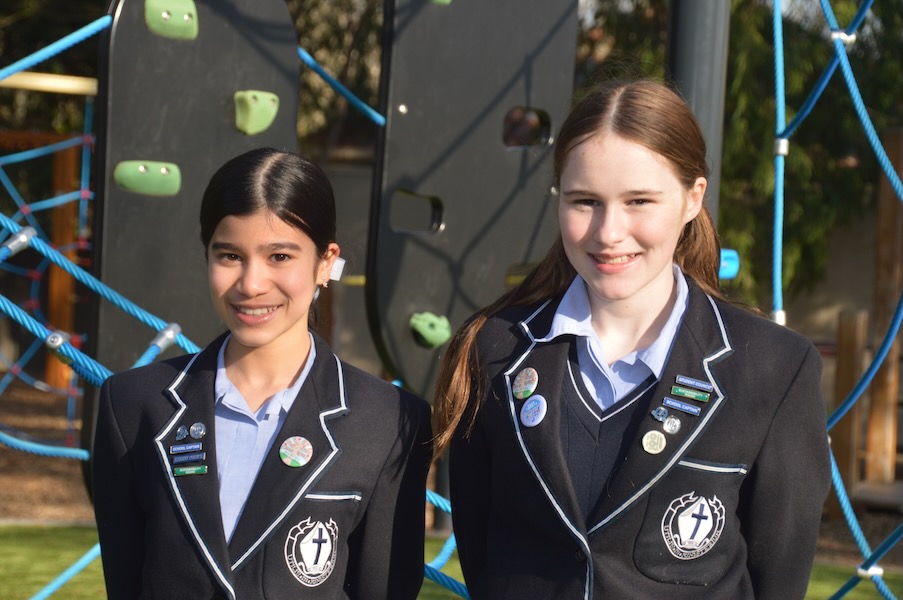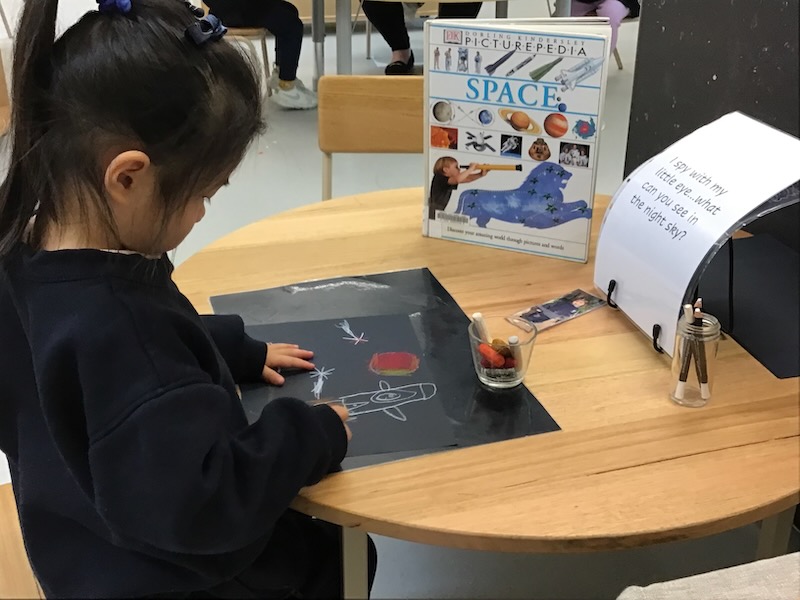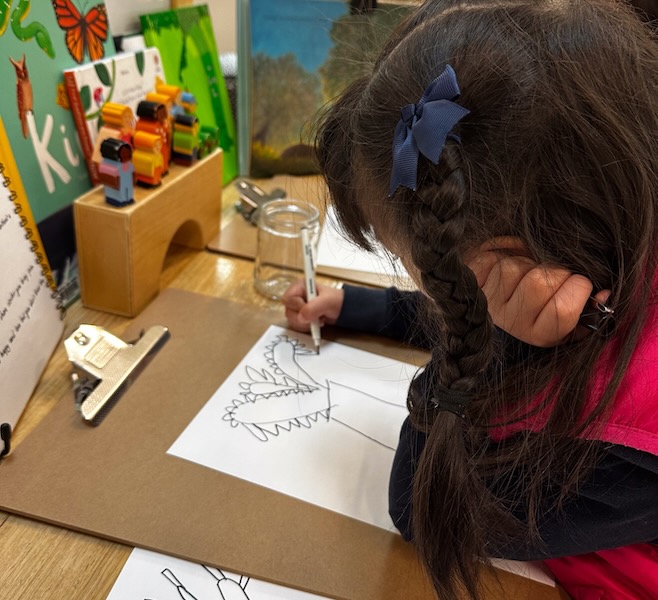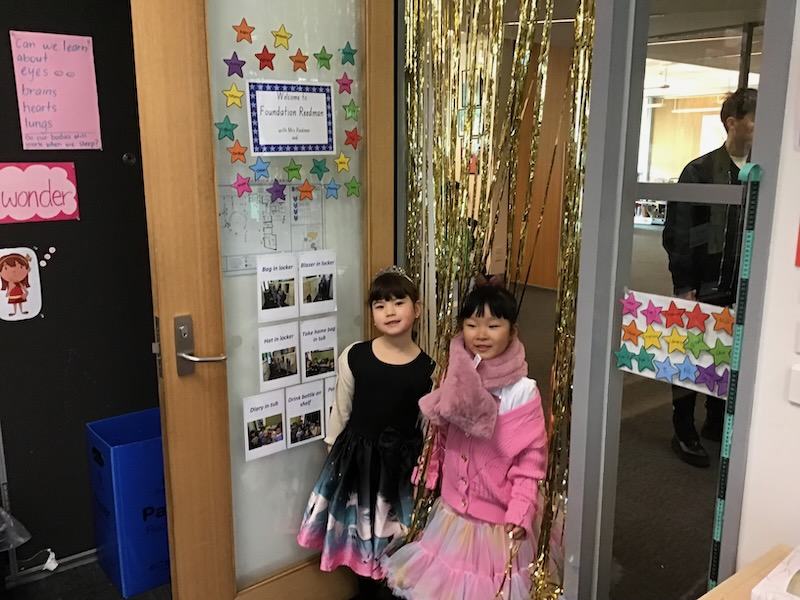Today, School Chaplain Reverend Creed offers the community a reflection during this Advent season.

It was a pleasure inducting our Year 6L students as our Ormiston leaders for Semester Two. There were many highlights of this important event including the speeches of three students – Claire Nguyen, Aanya Richharia and Georgia Papadopoulos and the ballet and piano performances from Lauren Tang and Rachel Franco. In their speech, the three Year 6L students spoke about leadership and what it meant to them. During the assembly, it was explained that our Year 6 program recognises the leadership potential in all students and in 2023, each Year 6 student will get the opportunity to experience being a recognised leader. I would like to thank Rebecca Leondidis for organising our student leaders for Semester Two and as a school community, we look forward to their contributions throughout the rest of the year.
Art Leaders
Emilia C & Shreya S
Assembly & Events Leaders
Aneira P & Aanya R
House Leaders
Georgia P, Sophie M, Emilia C & Charvi D
Library Leaders
Lauren T, Rhea G & Sharkia P
Music Leaders
Alina X & Kasey H
School Captains
Hanna L & Rachel F
Social Service Leaders
Claire N & Alina H
Sustainability Leaders
Isla K, Elsa W & Cleo S
At our leader’s assembly, we also had the opportunity to induct our Student Council representatives for Semester Two. Mr Goodwin read out the names of the students from Year 1- 6 and talked about the importance of leadership at an early age and being a positive role model for the school community. We look forward to the service learning projects that will be undertaken by the group, and other activities that involve the Ormiston. Congratulations to the following students:
Year 1 – Hailey Y
Year 2 – Eshaal A
Year 3 – Sofia R
Year 4 – Cathy G
Year 5 – Likka J & Elfie F
Year 6G – Ruth W
I would like to wish all Ormiston families a lovely weekend.
Paul Donohue
Head of Junior School





The Early Learning 3 children are embarking on a captivating journey to explore the fascinating world of the five senses. Over the past few weeks, we have introduced them to the sense of sight through asking them the question “I spy with my little eye, what do you see in the night sky?”. This question has ignited their curiosity and sparked meaningful discussions about the wonders of the universe. The responses from our imaginative young minds have been inspiring. Margot shares with excitement, “I always see Mars,” while Natasha enthusiastically exclaims, “The moon, rocket ships, and stars!” Bella, with a hint of wonder in her voice, chimes in, “I see Earth.” These delightful conversations have not only enriched their understanding of sight but also instilled a sense of awe and appreciation for the boundless beauty that surrounds us in the night sky. As we continue our exploration of the other senses, we look forward to witnessing their minds blossom with curiosity and their hearts open to the marvels of the world around them.

Archen – “The moon and stars. You see them at day and night. You can only see the moon at the day and not the stars. You can use a telescope to see them. There’s the moon. Look at my moon. This is a shooting star and it goes ‘whooooooosh’. I think I’ll see a rocket”

Giselle – “The moon and the stars. Shooting stars”

Vianna – “I can see every space planet and rocket ship. You can see the moon. The stars. This is the moon. This is earth where we live. This is the rocket. People go in the rocket ship, that’s how they blast off”.
Melinda Murphy & Jacqui Laird
Early Learning 3 Teachers



The beginning of Term 3 saw the Early Learning 4 Part Time children relaunch into the inquiry ‘taking to heart, taking to mind, taking to action’. Shel Silverstein’s fictional storybook ‘The Giving Tree’ prompted children’s thinking and discussion to consider ‘What does it mean to give?’, and ‘Do you need to have a heart and brain to give?’. Here is an excerpt:
Xavier said, “It is something you might think about and then give that something to someone special.”
Scarlett said, “Your brain helps you to think and your heart helps to love them and then you can give something special.”
Ariel agreed, “Your brain and heart help you to give.”
Xavier disagreed, “You don’t have to love
someone to give, you can just think about them”.
Chloe said, “You can give by sharing and caring.”

Above: A poster created by the EL4 children about the Winter Warmth Appeal
The lengthy dialogue led children to consider ‘giving’ as an ongoing action that is shown to people, animals, plants, and Country. Connection to our natural community, in this case, trees and nature provoke children to think deeply and formulate their own ideas and understanding. Stories such as these prompt conversations between children about characters such as the tree and provide a tangible representation where the action of giving can be observed through a narrative. Given the natural unfolding of the discussion, children made connections with nature. Chalaw (2020) research found considerable evidence that “these feelings [of] joy, respect, appreciation, oneness and responsibility [support] children to recognize the interdependence between the wellbeing of themselves and the wellbeing of the world”.


Above: Avina and Miya creating their own ‘giving tree’ illustration.
During a Library session with Mrs Sally Spencer, the children actively listened to Sally Soweol Han’s fictional book ‘Tiny Wonder’, where children followed a story of a little girl who shared the wonder of a dandelion seed. Through curiosity and nurturing, she gave the gift of dandelions to the citizens of the city. Mrs Spencer relaunched the inquiry by asking the children: ‘Can a dandelion help people?
Xavier said, “if you have a whole lot of dandelions, you can make a garden to share.”
Scarlett agreed “share all the beautifulness”.
Chloe exclaimed, “If you share and share and share, you feel happy, it small then big, then big and bigger!”
The action of giving and sharing can be seen as an act of kindness.
The children established the importance of this exchange to “be nice, makes people feel happy when you nice” stated Jacqueline.
Over the next few weeks, as children engage in the Annual Anglicare Winter Warmth Appeal, they will be able to observe the tangible ripple effect, one act of kindness can have in contributing to the greater sum of actions of an entire community. Kiki concluded by saying “if everyone brings [donations] then they’ll be lots and lots. It’ll make a lot, even 100!”
Chawla, L., & Gould, R. (2020). Childhood nature connection and constructive hope: A review of research on connecting with nature and coping with environmental loss. People and Nature, 2(3), 619–642.
Esther Wong
Early Learning 4 Teacher & Early Learning Coordinator

Oooh la la! There was a plethora of pink and purple in Foundation this week as we channelled Fancy Nancy to celebrate the 100th day of Foundation. Everyone enjoyed dressing up to celebrate this milestone and participated in many activities to do with the number 100. The students had a great day and it was a lovely way to reflect on the growth and learning that has taken place during the students first 100 days of school.
“We liked reading the book about Fancy Nancy’s 100th day of school” -Agnes
“It was fun and we liked to dress up” -Harriet
“I liked the golden streamers on the door and the balloons on the board” -Tiffany
“I loved the 100th day because we didn’t need to wear school uniforms, we could wear our home fancy dresses and fancy things and make me laugh” -Michelle
“I liked the 100th day of school because there were so many fun activities” -Victoria
“It made me feel like a party. Mrs Reedman and Mrs Vivarini got to dress up too. I like being fancy.” -Lilian
“Our learning has changed because we know lots of things now” -Mia
Selena Reedman
Foundation Classroom Teacher





On Monday the rain held off and Year 3 had a wonderful time on their excursion to the Royal Botanic Gardens Cranbourne. On arrival we shared a special Acknowledgement of Country, which incorporated English words, Boonwurrung words and Auslan signs. In our first session students were shown some Aboriginal tools and learned about how they were made and what they were used for. They were able to hold a coolamon, possum skins, white punk fungus and boomerangs.
Walking through the beautiful native gardens, we were encouraged to stop and gently touch some of the plants and trees. The students were fascinated by the grass tree and how its sap could be used as a kind of superglue! After being outside in the cool weather, it was lovely to stop and try some lemon myrtle tea which warmed us up.
Our session leaders, Jaffa and Sofia, showed us how to make ochre and examples of Aboriginal art works. Students worked in pairs to make their own ochre paint and then stamped handprints and drew significant symbols on pieces of calico cloth.
“I enjoyed the ochre painting and touching the tools and animal skins.” – Olivia L
“I learnt that possum fur is the third warmest fur in the world.” – Nicole L
“I learnt that they squeezed the juice out of a banksia and, when it was dry, they used it as a hairbrush!” – Olive M
“I was surprised that they used a reed as a snorkel.” – Olivia D
“I really enjoyed drinking the lemon myrtle tea.” – Alice L
“I learnt that they used possum skin as a blanket and bones to sew things.” – Taleana D
“I was surprised that there is a type of boomerang that doesn’t come back to the person who threw it.” – Lily D
“We touched wallaby, kangaroo and possum skins and I have never touched them before.” – Stephanie M
“I learnt that the melted tree sap was used to glue broken pieces together.” – Doris C
“I enjoyed feeling the possum skins.” – Cathy Z
It was wonderful to see the students so engaged in their learning as they made connections to information they already knew and asked questions about the different types of tools and plants they saw. This experience gave them a stronger understanding of First Nations culture and the importance of connection to Country.
Liz Warren
Year 3 Classroom Teacher





Year 4 Mainstream Chinese students have been exploring a story in Chinese called ‘How will I get there?’. In the story, Pingping wants to visit her friend Xiaoming who lives in Beijing, China. On her journey, Pingping meets different people who drive different transports and help with her travel. These include a policewoman, a train driver, a friendly alien, and a pilot. After students learned the key vocabulary and sentence structures of the story, they used an iPad app called Toontastic to produce animated scenes in groups according to the storyline. The pictures above are some screenshots of their animated background setting. After creating the animation, students then used Chinese to provide the audio narration to explain their animation. It was impressive to see Year 4 students applied their learned language skills into a cartoon they designed whilst beautifully utilising technology to bring their characters to life.
Scarlett Zhang
Chinese Coordinator

Last week, the Junior School held our third Parent Forum for our Chinese community hosted by Barbara Peng Lao Shi. We were delighted to see so many of our families join us to foster a strong connection within our school community. The purpose of this event was to provide an overview of our school’s policies, activities and initiatives while offering a platform to address any questions. This event offered new families an inviting and safe environment to connect to school and to connect to others.
Highlights of the Forum:
Together with Barbara, we will continue to nurture our connection and conversations with families whom English is their Second Language and bridge the communication gap. We look forward to many more events soon.
Michelle May
Learning Diversity and EAL Teacher

Today, School Chaplain Reverend Creed offers the community a reflection during this Advent season.
For our Year 6 students, their last few weeks at Junior School have been filled with celebrations!
The year has ended on a high note with the biggest event on the School’s calendar, Christmas at Camberwell, proving to be a huge success.

